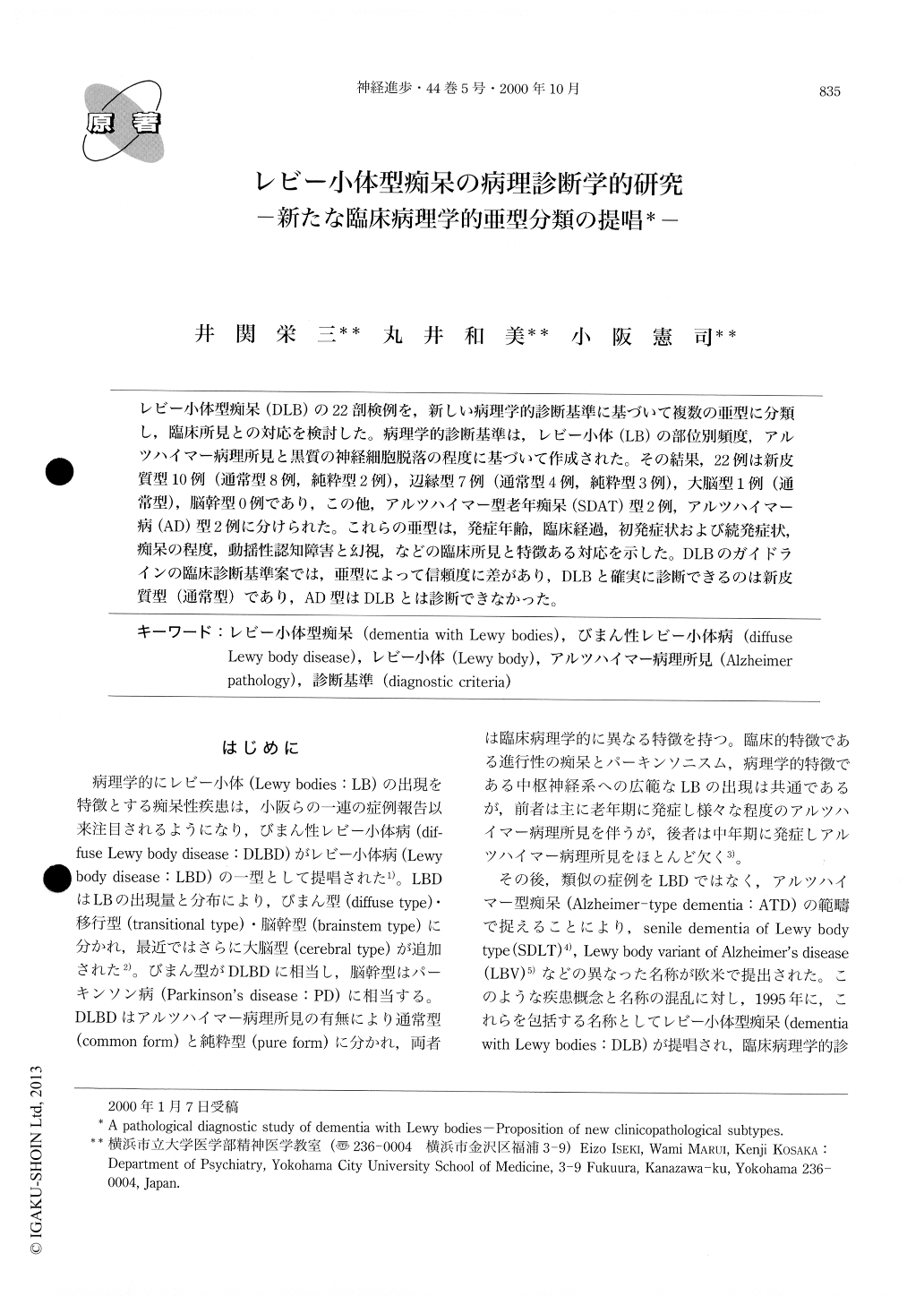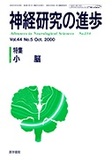Japanese
English
- 有料閲覧
- Abstract 文献概要
- 1ページ目 Look Inside
レビー小体型痴呆(DLB)の22剖検例を,新しい病理学的診断基準に基づいて複数の亜型に分類し,臨床所見との対応を検討した。病理学的診断基準は,レビー小体(LB)の部位別頻度,アルツハイマー病理所見と黒質の神経細胞脱落の程度に基づいて作成された。その結果,22例は新皮質型10例(通常型8例,純粋型2例),辺縁型7例(通常型4例,純粋型3例),大脳型1例(通常型),脳幹型0例であり,この他,アルツハイマー型老年痴呆(SDAT)型2例,アルツハイマー病(AD)型2例に分けられた。これらの亜型は,発症年齢,臨床経過,初発症状および続発症状,痴呆の程度,動揺性認知障害と幻視,などの臨床所見と特徴ある対応を示した。DLBのガイドラインの臨床診断基準案では,亜型によって信頼度に差があり,DLBと確実に診断できるのは新皮質型(通常型)であり,AD型はDLBとは診断できなかった。
The 22 autopsied cases of dementia with Lewy bodies (DLB) were pathologically classified into 10 neocortical type cases (common form 8, pure form 2), seven limbic type cases (common form 4, pure form 3), one cerebral type case (common form 1), no brainstem type cases, two senile dementia of Alzheimer type (SDAT) type cases and two Alzheimer's disease (AD) type cases according to our pathological criteria, which were based on the regional incidence of Lewy bodies (LB), the degree of Alzheimer pathology and the degree of neuronal loss in the substantia nigra. Each subtype was preferentially correlated with some clinical features, such as the age of disease onset, the clinical duration, the degree of dementia, the presence or absence of parkinsonism, fluctuating cognition and visual hallucination. The clinical diagnostic criteria of DLB showed the different reliabilities between the subtypes, and could diagnose as DLB certainly the neocortical type (common form) but not the AD type.

Copyright © 2000, Igaku-Shoin Ltd. All rights reserved.


